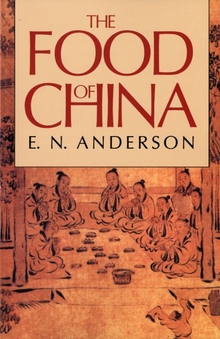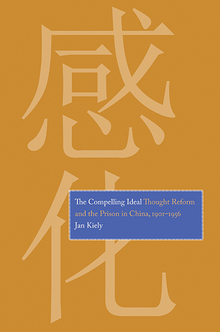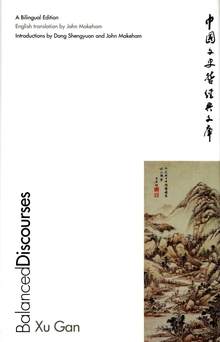The Food of China
WARNING
You are viewing an older version of the Yalebooks website. Please visit out new website with more updated information and a better user experience: https://www.yalebooks.com
E. N. Anderson
To feed a quarter of the world’s population on only seven percent of the world’s cultivated land and at the same time to have developed a renowned cuisine is perhaps the most exemplary achievement of the Chinese people. What accounts for their success? And what can be learned from it?
"Lively and engaging. . . . Food is placed in its contexts, which range from questions of land tenure to those of ritual. It is a book that can be read with pleasure both by amateurs of Chinese cooking and by persons interested in issues of agriculture and nutrition."—Ann Waltner, Annals of the American Academy of Political & Social Science
E.N. Anderson’s comprehensive, entertaining historical and ethnographic account of Chinese food from the Bronze Age to the twentieth century shows how food has been central to Chinese governmental policies, religious rituals, and health practices from earliest times. The historical survey of agricultural and culinary customs, in the first half of the book, offers a wealth of fact and interpretation on such topics as the effect of government policy on agricultural innovation; the relation of medical beliefs to appetizing cuisine; the recycling of waste products on the farm; the traditional absence of food taboos (including the practicality of eating one’s pests, or feeding them to pigs and chickens, instead of poisoning them and the environment); and the key factors in the gourmet quality of Chinese food from the simplest to the most elaborate dishes. Without glossing over the occurrences of famine China’s history, Anderson concludes that the full story is one of remarkable success in feeding maximum populations over the millennia. Underpinning this accomplishment, he cites China’s traditional stress on food as the basis of the state and as fundamental not only to individual well-being but to the enjoyment of life.
Anderson turns to present-day China in the latter half of the book, describing in rich and enticing detail the regional varieties in Chinese diet, food preparation, and rituals of eating and drinking. These lively, readable chapters as well as those in the first half of The Food of China make it a prime source for anyone—general readers and scholars alike—with an interest in Chinese history or food.
"Lively and engaging. . . . Food is placed in its contexts, which range from questions of land tenure to those of ritual. It is a book that can be read with pleasure both by amateurs of Chinese cooking and by persons interested in issues of agriculture and nutrition."—Ann Waltner, Annals of the American Academy of Political & Social Science
E.N. Anderson’s comprehensive, entertaining historical and ethnographic account of Chinese food from the Bronze Age to the twentieth century shows how food has been central to Chinese governmental policies, religious rituals, and health practices from earliest times. The historical survey of agricultural and culinary customs, in the first half of the book, offers a wealth of fact and interpretation on such topics as the effect of government policy on agricultural innovation; the relation of medical beliefs to appetizing cuisine; the recycling of waste products on the farm; the traditional absence of food taboos (including the practicality of eating one’s pests, or feeding them to pigs and chickens, instead of poisoning them and the environment); and the key factors in the gourmet quality of Chinese food from the simplest to the most elaborate dishes. Without glossing over the occurrences of famine China’s history, Anderson concludes that the full story is one of remarkable success in feeding maximum populations over the millennia. Underpinning this accomplishment, he cites China’s traditional stress on food as the basis of the state and as fundamental not only to individual well-being but to the enjoyment of life.
Anderson turns to present-day China in the latter half of the book, describing in rich and enticing detail the regional varieties in Chinese diet, food preparation, and rituals of eating and drinking. These lively, readable chapters as well as those in the first half of The Food of China make it a prime source for anyone—general readers and scholars alike—with an interest in Chinese history or food.
E.N. Anderson is professor of anthropology at the University of California, Riverside.
"A good introduction to Chinese food, this book traces the emergence of the food system through the centuries from the Bronze Age to modern times. . . . Of special interest is the chapter taken from the personal experiences of the author while living in Hong Kong. . . . Easy to read, this entertaining book will be fascinating to the general reader as well as to the scholar of Chinese history or Chinese cuisine. It is recommended for public, college, and university libraries."—Arlieda Ries, Science and Technical Annual Reference Review
"This book is as ambitious in concept as its title suggests. . . . An extremely detailed description of Chinese (primarily Cantonese) ingredients, cooking methods, medical beliefs and practices concerning food, and social practices around food."—Elizabeth L. Johnson, Pacific Affairs
"A comprehensive account of what the Chinese have eaten over thousands of years—history, philosophy, and a guide to the rich ethnographical variations in modern diet, food preparations, and ritual."—Oxford Times
"Professor Anderson has written a wide-ranging account of the Chinese food system, skillfully presenting a wealth of information in an entertaining and eminently browseable form. It is especially welcome because it combines historical chapters on the evolution of Chinese food with a survey of the culinary scene of today. . . . The book itself is beautifully produced to high standards. . . . The best introduction to the subject and a treasure-trove of information for bookish gourmands and anybody interested in a major aspect of Chinese culture."—Stefan B. Polter, Asian Affairs
"The Food of China is a comprehensive anthropological work dealing with the interplay of agriculture, government policy, food Choices, medicine, and economics in traditional China. . . . Richly detailed."—Virginia M. Getty, Educational Materials in Review
"Anderson, an anthropologist who has lived with Chinese in Hong Kong while doing fieldwork, proceeds methodically through the millennia of Chinese civilization showing how the larder evolved over time."—Raymond Sokolov, Natural History
"This book is written in a lively and engaging manner. Food is placed in its contexts, which range from questions of land tenure to those of ritual. It is a book that can be read with pleasure both by amateurs of Chinese cooking and by persons interested in issues of agriculture and nutrition."—Ann Waltner, Annals of the American Academy of Political & Social Science
"How does China manage to feed one-fourth of the world’s population on only 7% of the world’s cultivable land? The author presents an engaging account of the traditional system of Chinese agriculture as a possible model for improving agricultural systems in other parts of the world today. . . . A comprehensive overview of the development of Chinese food. . . . factually detailed and entertaining. . . . a wonderfully entertaining book that should become a prime source on Chinese history and food."—Donna R. Watson, Journal of the American Dietetic Association
"An uncommonly wide-ranging, imaginative, and knowledgeable essay on China’s traditional material culture, with the history of agriculture at its center, but also taking into account the social, institutional, technological and scientific, and even the aesthetic and literary dimensions of this complex subject. . . . Destined to become a minor classic. It is a delicious book: elegant and graceful in presentation, subtle and skillful in its combination of historical, social, and cultural ingredients, intellectually substantial and nourishing."—Jerome B. Grieder, Natural History
"A compact and authoritative account of what native foods were gathered and grown from the beginning, when others first appeared, when rice replaced millet as the basic food, how food has been used as medicine and in ritual in the past and present, and how the different dynasties’ political styles affected agriculture and the common diet. Anderson believes that the West has much to learn from China’s efficient and organic agricultural system. Students of Chinese foodways also have much to learn from his clear and well-ordered report."—Kirkus Reviews
"E. N. Anderson’s The Food of China, despite its title, is neither a cookbook nor a history of Chinese cuisine. It is a rare and wonderful essay, at once erudite and engagingly written—a provocative, wide-ranging, and conceptually imaginative study of the history of Chinese food generally: foodstuffs, technology, agrarian institutions, transportation, methods of preparation, medicinal uses, folklore both elite and popular, and much else besides. It will be warmly welcomed by students of Chinese society, economics, and culture. But The Food of China is not intended for the entertainment, only of scholars. Anyone interested in almost any aspect of the daunting question of how the Chinese have managed to sustain themselves generation upon generation, from earliest times down to the present, will find much to ponder in Anderson’s thoughtful, refreshingly unpretentious, and fascinating book."—Jerome B. Grieder, Professor of History and East Asian Studies, Brown University
"This engrossing and well-written book will be enjoyed not only by scholars but also by general readers."—Cho-yun Hsu, University of Pittsburgh
ISBN: 9780300047394
Publication Date: September 10, 1990
Publication Date: September 10, 1990
330 pages, 6 1/8 x 9 1/4








